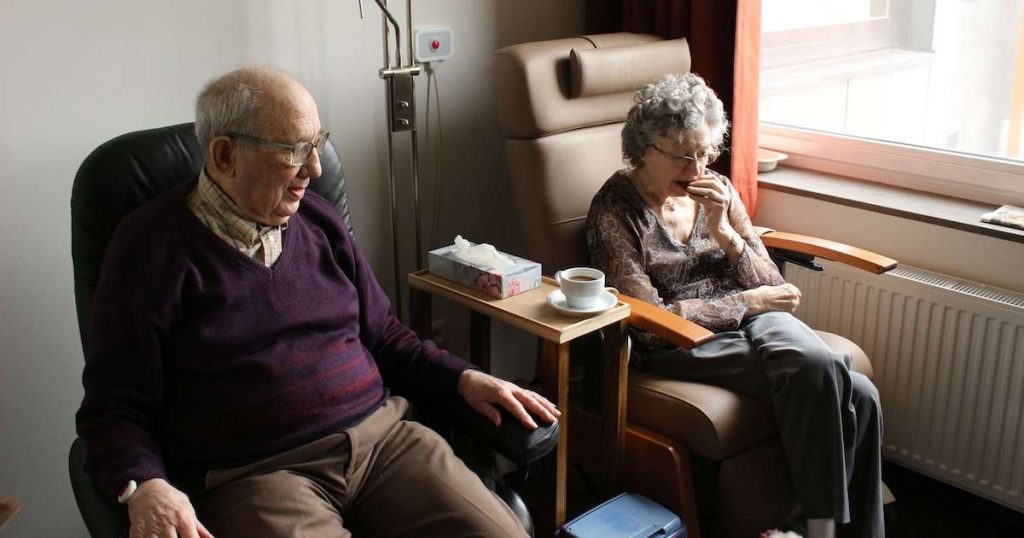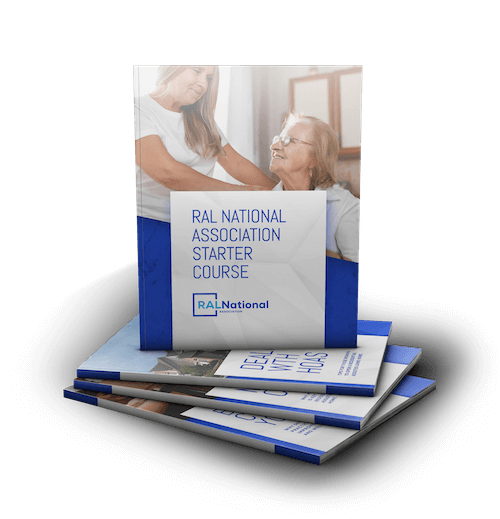High Blood Pressure (HBP) has been the nemesis of Americans for over 120 years, but there are ways to improve it with quality senior living. There are numerous reasons people develop HBP, but the effects of the disease can range from minor health impact to death. There are several unanswered questions the residential assisted living industry needs to address in order to continue providing quality care.
- Why is HBP such a problem?
- Why is the effective range of impact so broad?
- What can you do to prevent, or at least treat it?
- Is the effect of HBP in seniors more severe than in a younger population?
What You Need To Know About Blood Pressure
First, let’s start by identifying what an ideal blood pressure count looks like – what is good blood pressure? Blood pressure is considered in control when the systolic (the top number) is less than 120 and the diastolic (the bottom number) is less than 80. Ideally, these numbers will appear in writing as 120/80 – this is considered in control, which means no danger is present for any major cardiovascular event. High blood pressure, also known as HBP or hypertension, is a serious condition that is common amongst seniors.
The risk of developing HBP increases with age. The increase in risk is attributed to:
- Poor diet
- Sodium rich diet and snacking
- Lack of exercise
- Reduction in water intake
- Increase in weight due to lack of activity
- Increase in alcohol consumption
It is estimated that approximately 108 million adults in American have HBP. In other words, 45% of the population is hypertensive – yikes. The tragedy of this statistic is not the prevalence but the treatment. Only about 25% of Americans have their HBP in control, meaning that their blood pressure falls within the healthy range advocated by the American College of Cardiology.
High Blood Pressure Poses Serious Health Damage
HBP is often called the silent killer because it has no visible symptoms. It is most often detected by simple blood pressure checks at any doctor’s visit. While HBP may be silent, it is not inactive. The senior may be unaware of the condition, all the while it is likely wreaking havoc on the body.
HBP damages on the body can range from multiple side effects, such as:
- Blood vessels throughout the body
- Capillary beds in and around the kidneys
- Valves of the heart
- Small veins and capillaries of the hands and feet
Sometimes, HBP causes swelling of ankles, feet and hands, and there is no quick cure. High blood pressure can be well managed with lifestyle changes and prescription medication.
However, medication must be carefully weighed and considered for seniors experiencing underlying conditions in the aging process. Seniors are especially prone to:
- Coronary artery disease
- Heart attack
- Heart failure
- Stroke
- Vascular dementia
- Kidney disease or failure
- Vision loss due to glaucoma
- Angina
- Peripheral artery disease (PAD)
- Shortness of breath during light physical activity or exercise
As a result of illnesses associated with aging, some HBP medications are not recommended for seniors. HBP should be managed carefully because the ramifications from mismanagement can cause irreparable damage to the body.
10 Tips To Help Seniors With High Blood Pressure Improve Health
We’ve explained why high blood pressure is so dangerous with the hopes of encouraging owners of residential assisted living homes to help seniors make changes to improve their health. And with the right changes it is possible to maintain a healthy blood pressure.
The following 10 lifestyle changes can help older adults lower blood pressure and live healthier lifestyles.
The proper steps sometimes result in the reduction and even removal of medication. In order for changes to become normal, one must work at them consistently. Therefore, do not make massive changes in the lifestyle of residents in assisted living right away. Remember, some activities or techniques have been a part of their lifestyles for a very long time. Change is difficult, but attainable in measured doses.
1. Regularly Monitor Blood Pressure
- When tracked improvement becomes a reality.
- Get a home blood pressure monitor to take measurements daily or weekly.
- Keep a notebook to record the date and blood pressure measurement so you can track changes over time.
2. Take Medications as Prescribed
- Take the medication consistently and on time – do not skip doses.
- Do not alter the medication in any way without confirming with the pharmacist.
3. Maintain A Healthy Weight
- Lower blood pressure by losing 10 pounds, if you are overweight.
4. Eat Heart-Healthy Foods
- Adjusting eating habits is an effective way to lower blood pressure.
- Focus on whole foods, less fat, and more fruits and vegetables.
5. Use Less Salt (Sodium)
- Sometimes the culprit of HBP is seasoning, especially salt or salt-based products.
- A reduction in the use of salt also helps reduce and control high blood pressure.
- Look for seasonings that have low to no sodium content. Many are quite tasty and will help reduce and control HBP.
6. Exercise Regularly
- Regular exercise helps lower blood pressure. Aim for moderate activity at least 2.5 hours a week.
- Walking is an excellent activity and can be done inside the house or outside in nature.
- Also, many seniors still enjoy a good bike ride or pool aerobics. These are great exercises as they preserve the joints quite nicely, and nothing beats fun in the pool and water aerobics, which is a total body workout.
7. Don’t Smoke
- Smoking nicotine raises blood pressure and heart rate.
- Smoking also causes arteries to tighten, which also increases blood pressure.
If a senior needs help in stopping this bad habit, then he may look into stop smoking hypnotherapy and other treatments.
8. Drink Less Alcohol
- Drinking alcohol increases blood pressure.
- Limit intake to 1 drink a day or less.
9. Manage Stress
- Blood pressure rises when stress occurs, limiting opportunities for stress helps.
- Some people may benefit from meditation and relaxation exercises.
- If anxiety is present, medical treatment may be necessary.
- Difficult experiences may need to be addressed with a psychologist or psychiatrist.
- Others might relax with exercise or by immersing seniors into a hobby like art, gardening, or crossword puzzles.
10. Other Healthy Lifestyle Habits
- Get adequate rest.
- Drink plenty of water.
- Laugh a lot.
HBP does not have to be the nemesis for seniors in residential assisted living. If HBP has become a reality, face it head on with the above strategies. Remember, integrate these changes slowly so that success can be realized and maintained.
Quality Senior Care Starts With Residential Assisted Living
The Residential Assisted Living National Association provides important information, resources and support.
RALNA advocates for residential assisted living business owners and operators with guidance for legal expertise, continued education, national marketing, group purchasing power and a continual positive voice for the industry.
For additional information start by clicking here.











